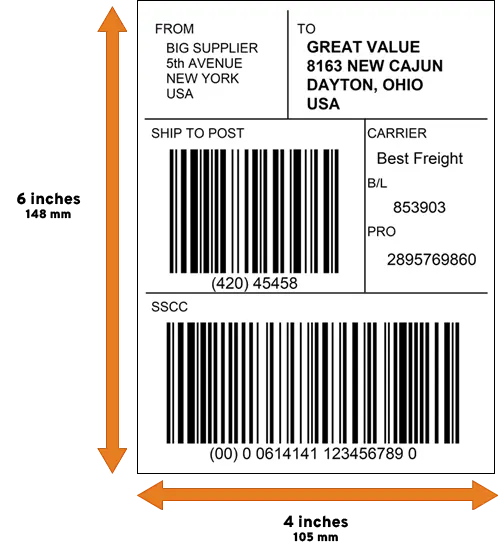GS1 Logistics Labels
What is a GS1 Logistics Label?
A GS1 Logistics Label is a standardized shipping label that uses GS1 barcodes to provide essential tracking and identification information for logistics and supply chain operations. It enables efficient handling, accurate inventory management, and seamless integration between trading partners.
Key Features of a GS1 Logistics Label:
- Serial Shipping Container Code (SSCC) – A globally unique identifier for tracking shipments.
- GS1-128 Barcode – Encodes key logistics data such as weight, destination, and batch numbers.
- Standardized Format – Ensures compatibility across supply chains and automated systems.
- Enhanced Traceability – Improves shipment visibility, reduces errors, and supports compliance.
Widely used in retail, healthcare, and manufacturing, GS1 logistics labels help businesses streamline operations and enhance supply chain efficiency.

Use Cases
GS1 Logistics Labels provide end-to-end supply chain visibility, improving efficiency, reducing errors, and ensuring compliance across industries.
- Retail & E-Commerce Fulfillment – Ensures accurate tracking of shipments from warehouses to distribution centers and stores.
- Manufacturing & Supplier Shipments – Standardizes labeling for raw materials, components, and finished goods moving through the supply chain.
- Healthcare & Pharmaceuticals – Enhances traceability of medical supplies, ensuring compliance with global regulatory requirements.
- Grocery & Perishable Goods – Supports cold chain logistics by encoding expiration dates, batch numbers, and handling instructions.
- Third-Party Logistics (3PL) Providers – Improves efficiency in cross-docking, inventory management, and last-mile delivery.
Automotive & Industrial Supply Chains – Enables seamless identification of large shipments, reducing misroutes and delays. - International Trade & Customs Compliance – Standardizes documentation for imports and exports, ensuring faster clearance and reduced errors.















 RFID Cage
RFID Cage